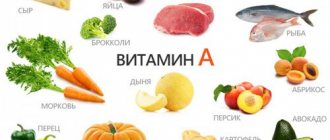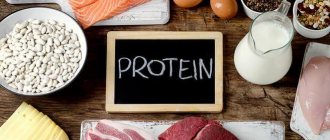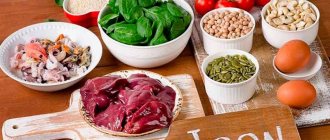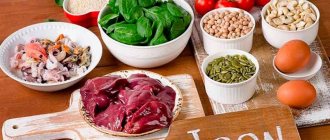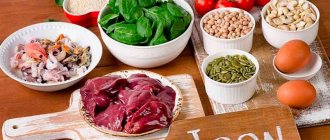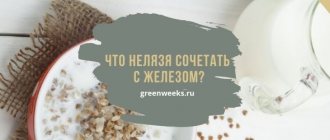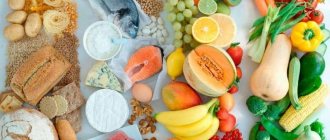Fitness trainer, nutritionist Nika Tyutyunnikova: “The 19th element of the periodic table is one of three that the human body needs constantly and in large quantities. It directly affects the functioning of the heart, the condition of blood vessels, and blood pressure levels. The substance protects against depression, improves brain activity, prevents strokes, atherosclerosis and removes toxins. Potassium (K) is an antagonist of sodium (Na), the excess of which leads to edema, hypertension, and kidney pathologies. The optimal ratio of potassium and sodium in the body is 2:1.”
Products containing potassium are an essential component of the diet of adults and children.
- Children. Participates in the formation of muscle and bone tissue, immunity. Regulates blood clotting processes, the functioning of nerve cells and the emotional state.
- Women. Responsible for the state of reproductive function. There are cases where hypokalemia was the cause of infertility. During pregnancy, it controls muscle tone and blood pressure, prevents the development of edema, and supplies the brain with oxygen.
- Men. Increases endurance, improves spermatogenesis, affects testosterone levels and helps maintain male strength.
When there is a potassium deficiency, the cardiovascular and nervous systems are the first to fail.
Avocado.
Avocados have become extremely popular and trendy—and for good reason.
Avocados, rich in good fats, are also an excellent source of vitamin K and folic acid. Half an avocado (100 grams) contains 487 mg of potassium or 10% of the norm. If you eat a whole avocado, you will immediately get 20% of your daily potassium needs.
We offer you: 20 foods high in vitamin C
Moreover, avocados may help people with high blood pressure, who are often advised to increase their potassium intake and reduce their salt (sodium) intake.
This advice is based on a study called Dietary Approaches to Control Hypertension (DASH). Further studies confirmed the benefits of potassium in lowering blood pressure.
Avocados, like most fruits, are low in sodium. Half an avocado contains 7 mg or just 0.5% of the recommended daily value of sodium.
We offer you: Products that are good for the liver
Summary: Avocados are rich in nutrients—just half of the fruit provides you with 10% of your daily potassium needs. They are also rich in vitamin K and folate and may even help lower blood pressure.
Where is potassium found: what foods are rich in the microelement
In the human body, potassium is involved in the functioning of most organs and systems. The microelement supports the normal functioning of the brain and heart, helps build muscle and bone frames, and is involved in the transmission of neuronal signals and the transport of other necessary substances.
But despite the benefits, there is no need to include the mineral as a supplement in a balanced diet. Vegetables, fruits and other available components of an adult’s diet will help fill the daily requirement of the element. We tell you where potassium is found and in which products the concentration of the substance is highest.
Sweet potato.
Like avocados, sweet potatoes are becoming increasingly popular and are often used as an alternative to potatoes.
This is an especially nutritious way to support your potassium intake—one medium-sized sweet potato contains 541 mg or 12% of your adequate potassium intake.
We offer you: 10 high-fat foods that are actually very healthy
What's more, sweet potatoes are low in fat, contain a small amount of protein, and are a good source of complex carbohydrates and fiber. They are also an excellent source of vitamin A, with one sweet potato providing more than 400% of the recommended diet.
Pair these tasty root vegetables with a good protein like beans or meat, dark greens or colored vegetables, and some fat for a balanced, filling meal.
Summary: Sweet potatoes are a great way to add more potassium to your diet. Just one medium-sized sample provides 12% of your food intake, plus some protein, fiber and vitamin A.
Symptoms of hypo- and hyperkalemia
Prolonged hypokalemia (serum potassium ion concentration less than 3.5 mmol/L in adults) can cause cardiac arrest. At risk are people who adhere to strict diets, take laxatives and diuretics, and workaholics. Deficiency picture:
- dry skin;
- hair fragility;
- acne on the face and body;
- constant colds;
- cognitive impairment (mind and memory suffer);
- nervousness, sleep disturbances, depression;
- constipation, diarrhea, swelling;
- constant strong thirst;
- urinary disorders;
- increased cholesterol;
- hypo- or hypertension;
- muscle weakness;
- headache;
- miscarriage;
- nausea and vomiting.
Fitness trainer, nutritionist Nika Tyutyunnikova: “Lack of potassium often accompanies the so-called chronic fatigue syndrome. This condition is detected in people who devote all their strength to work. Typical portrait: manager under 35 years old. During the day, such a person is in constant stress, gets little rest, and eats on the go. In the evening, he goes to the gym, where the mineral is additionally washed away with sweat. At night, he tries to finish work and household chores, does not get enough sleep. With advanced hypokalemia, normalizing the diet is only one of the steps. Here you need to add potassium supplements. It takes three to six months to recover.”
Hyperkalemia is diagnosed if the concentration of potassium ions in the blood serum exceeds 5 mmol/l (in adults). This condition is usually a consequence of other health problems and is not associated with excess of the substance in the diet. For example, it develops with kidney pathologies, when the organ cannot cope with removing the substance from the body. Incorrect use of some potassium-sparing drugs leads to a similar effect. The condition is also possible in the event of a sudden release of potassium due to extensive destruction of muscle tissue (rupture, burn). Symptoms:
- excessive excitability of the nervous system;
- hot temper;
- vulnerability to panic;
- heavy sweating;
- decreased muscle strength;
- frequent urge to urinate;
- degenerative neuromuscular disorders;
- asthenia;
- autonomic disorders;
- arrhythmia;
- deterioration of myocardial contractility;
- skeletal muscle paralysis;
- intestinal colic (attacks of acute pain).
Spinach
Without a doubt, spinach is one of the most nutritious vegetables in the world.
We bring you: 12 High Carb Foods That Are Incredibly Healthy
One cup (156 grams) of frozen spinach contains 540 mg of potassium, or about 12% of the ADV.
It is also rich in other nutrients. The same serving size contains 366% of the recommended intakes of vitamin A, 725% of vitamin K, 57% of folic acid and 29% of magnesium.
Likewise, about three cups (100 grams) of raw spinach contains 558 mg of potassium, which is also about 12% of the amount needed.
Keep in mind that 100 grams of raw spinach is visually much more on your plate than the same amount of frozen spinach.
Summary: Spinach provides more potassium per serving than banana—about 12% of the ADV for one cup (156 grams) frozen or three cups (100 grams) fresh. This vegetable also contains vitamins A and K, as well as folic acid and magnesium.
Bioavailability
Under optimal conditions, potassium from food can be absorbed by the body by 90-95%. Vitamin B6 (pyridoxine), for example, contributes to this. Magnesium (Mg), which is a potassium synergist, plays a huge role. They are rich in sesame, wheat bran, cocoa, cashews, buckwheat, pine and walnuts, and almonds. (See this article for a complete list of magnesium-rich foods.)
At the same time, keep in mind that they interfere with the absorption of potassium and contribute to its leaching from the body:
- sweets;
- alcohol;
- caffeine;
- stress;
- constant muscle tension;
- excessive physical activity;
- diuretics and laxatives;
- cortisone preparations;
- sodium.
Watermelon
Watermelon is a large, tasty fruit with a high water content.
We offer you: 12 foods high in vitamin B12
Just two slices of watermelon (about 1/8 of a melon or 572 grams) will give you 640 mg of potassium, which is just under 14% of your required amount.
The same serving size also contains 172 calories, 44 grams of carbohydrates, 3.4 grams of protein, 0.8 grams of fat and 2.2 grams of fiber.
What's more, this plump red melon is an excellent source of vitamins A and C, as well as magnesium.
Summary: Watermelon is a delicious summer fruit, and just two slices can give you nearly 14% of your potassium needs, as well as vitamins A and C, in just 172 calories.
Coconut water.
Coconut water is a fantastic, hydrating drink. You can shop online.
It's a great natural alternative to sports drinks because it contains key electrolytes that help draw water into your cells, and its natural sugars provide energy during exercise or replenish lost glycogen stores after.
We offer you: 7 healthy foods high in vitamin D
One cup (240 ml) of coconut water contains 600 mg or about 13% adequate potassium. It is also a good source of magnesium, calcium, sodium and manganese.
It's refreshing when served chilled with ice after a sweaty workout.
Summary: Coconut water is not only an excellent hydrating drink, but also an excellent source of potassium, containing 13% of the required amount in just one cup (240 ml). It is also a good source of magnesium, calcium, sodium and manganese.
The importance of potassium and magnesium for the heart
Potassium, together with magnesium, is used to prevent arrhythmia, because Thanks to them, the correct passage of the cardiac impulse occurs. They apply:
- for the prevention of myocardial infarction;
- heart failure;
- improve myocardial contractions.
Potassium and magnesium are included in the complex of drugs in the treatment of angina pectoris because they make blood vessels more elastic. Potassium and magnesium are also used to prevent ischemic stroke. With their help, the blood thins and the risk of blood clots is reduced.
These macroelements supply the heart with energy and improve the metabolic processes of the heart muscle.
Potassium and magnesium deficiency
These 2 macroelements are substances that displace each other from cells. There is always a lot of magnesium in the human body. Potassium is supplied in smaller quantities and may not be enough.
So, when there is a lack of potassium, the cell with the missing element is occupied by magnesium and water. Due to this, cell outflow occurs.
If we talk about the heart muscle, then swelling in the cells can have disastrous consequences, causing myocardial infarction or ischemic stroke.
But not only the cells suffer, but also the channels through which nerve impulses pass. If the electrical pathway is swollen, arrhythmia may occur. To expel magnesium from the cell, potassium intake is necessary.
Magnesium is interchangeable with calcium. If a calcium ion occupies the cell instead of magnesium, the heart muscles will contract sharply, the person will feel pain, and the heart rhythm will be disrupted.
White beans
The term white bean can refer to navy (pea) beans, cannellini (white kidney), great northern beans, or lima beans.
Although bananas are praised for their potassium content, one cup (179 grams) of any of these beans contains twice as much potassium as one banana. One cup of cooked white beans gives you 829 mg of potassium—a whopping 18% of your required amount.
We offer you: 20 best foods high in soluble fiber
One cup also provides 28-61% of the dietary recommendations for various B vitamins. Additionally, white beans are an excellent source of iron and a plant-based protein.
Since one cup (179 grams) contains almost 19 grams of fiber, they are also very filling.
White beans are incredibly versatile and can easily be added to your diet, such as as an ingredient in salads or stews.
Summary: White beans are an excellent source of potassium—one cup (179 grams) contains 18% of the ADV, or the equivalent of two bananas. These beans can easily be added to salads and stews to increase your potassium intake.
How to prepare dishes from the proposed products
To maintain the maximum concentration of the substance in fresh products, no special measures need to be taken. The microelement belongs to the stable group. During storage, the amount of the substance decreases slightly.
However, when heat treating products to preserve microelements, it is worth considering 2 nuances.
- When in contact with water, the mineral readily turns into liquid. Cooking - in water or steamed - is not suitable for a diet with a microelement deficiency. The ingredients of the dishes are best served raw or baked. If food is boiled, then the food should be served with broth.
- For the mineral to be absorbed, a balance of magnesium and sodium is necessary. The first facilitates the production of microelements, the latter hinders. Select meal components so that the body receives the required daily intake of magnesium and approximately 2 times less sodium.
The heat treatment time of the mineral should be as short as possible. The longer a dish is cooked, the less substance the body will receive.
Dishes high in potassium
The best way to get your daily requirement of a microelement is to prepare a dish from several components with a high or medium potassium content. Thanks to the variety of components containing the mineral, you can come up with many variations. You can absorb the microelement from soups and desserts.
Botvinnik in meat broth
For a light soup rich in essential minerals, take:
- 2 liters of meat broth. Prepare fresh; cubed broth will not work. If you don't have beef broth, use water;
- medium onion;
- medium carrot;
- large beets;
- 4 potatoes;
- a bunch of beet tops;
- oil for frying and spices to taste.
Bring the broth to a boil, add the diced potatoes. Chop the onion, carrots and beets to your taste. You can cut into strips, cubes or grate. Fry the vegetables until golden in vegetable oil.
When the potatoes are cooked, add the roast and chopped beet tops to the broth. Add salt and spices. Boil the soup for a couple of minutes and serve the dish.
Avocado toast
To make trendy toast high in essential minerals you will need:
- a piece of bread is better than whole grain;
- egg;
- half an avocado;
- 40-50 g lightly salted salmon;
- 0.5 tsp. lemon juice;
- salt, black pepper.
Place a dry frying pan on the stove and fry the bread on both sides until crispy. To save time, you can use a toaster. If eating, rub both sides of the bread with fresh garlic.
Boil water in a saucepan. Stir the liquid to form a vortex and crack the egg into the center. Cook until the whites are completely set. It usually takes 3 minutes to cook a poached egg. Catch the egg and place it on a napkin to drain the water.
Place the avocado in a cup and mash to a paste. Salt, add pepper and lemon juice. Apply the spread to the bread. Place fish and poached egg on top of a dish rich in essential minerals.
Scrambled eggs with spinach and tomatoes
For a simple and quick breakfast with a high mineral content you need:
- 2 eggs;
- large tomato;
- a handful of fresh spinach;
- 30-40 g hard cheese;
- salt, black pepper, dried garlic, oil for frying;
- optional - flax seeds.
Heat a frying pan, pour a little oil. Add diced tomatoes. It is better to remove the skins from tomatoes first. To do this, make a crosswise cut on the surface and scald the vegetable with boiling water.
When the tomato turns into pulp, add spices and washed spinach. Let the greens simmer for 30 seconds and pour in the eggs. Salt the scrambled eggs, sprinkle with grated cheese, cover with a lid and bring to readiness.
If you like, add flax seeds on top of the dish. The seeds will additionally help replenish the mineral deficiency and diversify the diet with essential fats.
Pumpkin cream soup
For pumpkin cream soup, rich in essential minerals, you will need:
- liter of vegetable or meat broth. Do not use ready-made broth from concentrate - the powders contain sugar, which interferes with the absorption of potassium. Take homemade, fresh broth;
- 1 medium onion;
- 1 carrot;
- 2 potatoes;
- 500 g fresh pumpkin;
- 250 ml 20% cream;
- 2 cloves of garlic;
- 40 g peeled pumpkin seeds;
- a piece of whole grain bread;
- salt, black pepper, suneli hops, oregano, oil for frying.
Place the pan on the stove, pour in a couple of tablespoons of vegetable oil. Fry finely chopped onion until soft. Add carrot cubes, cook for another 5 minutes. When the frying becomes golden, add the potatoes and pumpkin. Cut into medium cubes to save time - the finished vegetables will still need to be blended in a blender. Fry for 5 minutes.
Pour the broth over the vegetables, add a little salt and boil until tender. Pour the broth into a separate container. Start pureeing the vegetables with a blender, gradually adding liquid to the desired consistency. Use the heated cream first, then the remaining broth. Season the resulting cream soup with salt, pepper, garlic, oregano and suneli hops. Return to the stove and bring to a boil.
Not all of the broth is needed for cooking. Focus on the consistency of the soup - the dish should be like a thick cocktail. It is also not necessary to completely replace the broth with cream; the former contains part of the digested mineral.
Pour the finished soup into bowls. Serve with pumpkin seeds, an additional source of potassium, and whole-grain bread croutons. For extra creaminess, you can add a spoonful of cream cheese to the finished dish.
Banana smoothie
For a quick, high-potassium snack, grab:
- banana;
- 1 tbsp. l. milk powder;
- 5 g peanuts;
- 5 g hazelnuts;
- 5 g sunflower seeds;
- 5 g pumpkin seeds;
- 150 ml cow's or plant milk.
Beat banana, powdered and liquid milk in a blender until smooth. Pour the cocktail into a cup, sprinkle with nuts and seeds. Pre-dry the seeds and nuts in a frying pan - the heat will help reveal the flavor of the product.
Black beans
Black beans, also known as turtle beans, are a staple food in Central and South America.
We offer you: 12 healthy foods high in iron
They are often used in burritos and soups. You can even buy them online.
Although white beans may have more potassium than black beans, the latter is still an excellent source of potassium. One cup (172 grams) of black beans gives you 611 mg, or 13% of the ADV.
However, because black beans contain phytates, which can reduce your body's absorption of minerals, not all potassium can be used.
It's hard to say how much these phytates might affect the absorption of minerals like potassium, but if you're using dried beans, it's best to soak them overnight. This step will help reduce the amount of phytates.
Summary: Black beans are a versatile food that can provide you with 13% of your potassium needs in one cup (172 grams). Pre-soaking dried beans can improve the absorption of minerals, including potassium.
Edamame
Edamame, traditionally eaten in Japan, is unripe soybeans served in pods.
We offer you: 12 foods high in omega-3
One cup also contains more potassium than a banana. One cup (155 grams) provides 676 mg, or just over 14% of the adequate dose.
They're packed with many other nutrients, but most notably, they contain 121% of the recommended dietary allowance of folic acid per cup (155 grams).
Moreover, they are an excellent source of vitamin K, magnesium and manganese.
Edamame is delicious when lightly steamed.
Summary: Edamame is rich in nutrients, with one cup providing 14% adequate potassium, as well as good amounts of vitamin K, magnesium and manganese.
Contraindications
Despite the fact that Mg and K deficiency provokes the development of serious diseases, in some cases it is contraindicated to consume foods and preparations containing potassium and magnesium.
In what cases should you limit your consumption of magnesium and potassium-containing products:
- chronic diseases of the kidneys and adrenal glands;
- atrioventricular block;
- increased content of K, Mg in the blood;
- severe forms of hypotension – a decrease in readings below 90/60 mmHg. Art.;
- myasthenia gravis;
- acidosis;
- severe dehydration;
- hemolysis;
- disruption of amino acid metabolism.
In older people, when taking antibiotics, potassium-sparing diuretics, non-steroidal anti-inflammatory drugs, the risk of developing excess Mg and K in the body increases.
Tomato paste.
Tomato paste is made from boiled tomatoes, peeled and seeded.
We offer you: 10 healthy foods high in zinc
This concentrated seasoning adds great flavor to all tomato-based sauces and dishes.
Just three tablespoons, or about 50 grams, contain 486 mg of potassium, which is just over 10% of the required amount. Tomato paste is also a good source of vitamin C and lycopene, a beneficial plant compound.
Watch out for tomato paste with sugar, additives or preservatives. It is advisable to choose a product with the fewest ingredients.
Summary: Tomato paste not only enriches the flavor of food, but also provides adequate amounts of potassium in small portions. Three tablespoons, or about 50 grams, contain about 10% of the required amount, as well as vitamin C and the beneficial plant compound lycopene.
Butternut squash.
Butternut squash is a sweet winter squash. Although technically a fruit, it is prepared as a root vegetable.
We offer you: 10 healthy foods rich in magnesium
One cup (205 grams) of butternut squash can provide you with 582 mg of potassium—more than 12% of your adequate intake.
It is also an excellent source of vitamins A and C and has lower amounts of B vitamins, vitamin E and magnesium.
Butternut squash can be roasted, boiled, steamed, or chopped to make hearty soups.
Summary: Butternut squash is an excellent source of potassium, providing 12% of the required amount in one cup (205 grams). This fruit also contains vitamins A and C, as well as smaller amounts of B vitamins, vitamin E and magnesium.
Daily intake of potassium and magnesium
There are certain norms for the consumption of these minerals by various categories of the population, which are determined by age, as well as gender.
- Children up to six months of age should receive magnesium (Mg) up to 30 milligrams per day, and potassium (K) up to 650 mg per day;
- Children under three years of age need up to 140 mg of magnesium and up to 650 mg of potassium;
- Children from four to nine years old up to 230 milligrams Mg and 1700 mg potassium;
- Children under 14 years of age up to 580 mg of magnesium and 1700 mg of potassium;
- Girls under 18 years of age need a daily intake of magnesium up to 690 mg, potassium up to 1700 mg;
- Boys under 18 years old: 740 mg Mg, up to 1700 mg potassium;
- Adult women up to 660 mg Mg and 2100 mg potassium;
- Men up to 760 mg Mg and 2100 mg potassium;
- Pregnant women belong to a separate category because... their body needs an increased amount of macroelements, magnesium, in this case it is consumed from 400 mg per day to 680 mg per day. The potassium norm doubles to 3400 milligrams per day.
These standards are given for people leading a measured, calm lifestyle, for athletes, people in stressful situations,
For people who sweat profusely, mineral intake rates increase. In case of vomiting, diarrhea, swelling, or in hot weather, you should also increase the amount of magnesium and potassium consumed.
Potato
Potatoes are a starchy root vegetable that remain a staple food in several countries around the world.
We offer you: 7 foods that cause constipation
One potato (136 grams) can provide 515 mg of potassium, which is 11% of the required amount.
One study found potatoes to be the best dietary source of potassium, with a small baked potato estimating that it provided 738 mg of potassium, or nearly 16% of the amount needed.
However, there are many different varieties of potatoes, and their potassium content may depend on the soil in which they are grown.
Because potatoes are eaten daily in many parts of the world, they may be a major contributor to potassium in people's diets.
Summary: Potatoes are a staple food for many households and are rich in potassium, with potatoes alone typically providing 11% of adequate intake.
The role of potassium in the body
For an adult, the essential mineral is useful for at least 10 properties.
The substance helps the heart function
The element participates in the cycles of muscle relaxation and contraction. With a deficiency of potassium in the body, the coherence of processes is disrupted. Problems with the contraction of the heart muscle can lead to irregular heartbeats, arrhythmias and increased stress on the vital organ.
The microelement maintains the water and acid-base balance of the body
Together with sodium, magnesium and calcium, potassium is responsible for alkalinity and maintains water balance in the body. An essential microelement protects cells from dehydration and the body from swelling. This property is useful not only for the functioning of internal organs, but also for appearance. Excess fluid with a deficiency of the element increases the volume of the body and leads to the formation of an “orange peel”.
The mineral helps strengthen bone tissue
The necessary element is used to strengthen the skeleton - the effectiveness of potassium in the fight against osteoporosis has been proven by research. An increase in bone mineral density was observed in both men and women in trials. The subjects consumed between 3000-3400 mg of potassium per day.
The substance strengthens muscles and relieves the body of spasms
Unpleasant sensations and muscle spasms often indicate a microelement deficiency. Potassium helps restore muscle tissue faster and maintain tone. Products rich in essential elements are indispensable for the body during active growth and physical activity. The diet of professional athletes should include the mineral in every meal. They even add an element to snacks and cocktails.
The element supports the brain activity of the body
The essential substance is involved in the process of oxygen delivery, which is necessary for normal brain function. With a potassium deficiency, a person quickly loses concentration, experiences a loss of strength, and suffers from headaches.
The substance normalizes blood pressure
Thanks to the normalization of water balance and sodium-potassium metabolism, the element is able to reduce blood pressure. The essential substance relieves tension in blood vessels, reduces stress on the arteries and helps the body fight hypertension.
Trace element helps reduce stress levels in the body
Potassium deficiency in the body reduces the ability to withstand stress. A person with a deficiency of the necessary element becomes irritable and runs the risk of developing a sleep disorder or falling into a depressive state. The mineral protects the nervous system, improves mood and overall well-being.
The substance restores metabolism
The element is involved in the processes of breakdown and absorption of food entering the body. Thanks to potassium, other necessary substances are absorbed in the digestive tract, which accelerate metabolic processes.
Trace element reduces the risk of stroke
Scientific studies of the substance's effect on the body give doctors reason to believe that potassium is important in preventing stroke. The necessary element normalizes the functioning of the brain, blood vessels, regulates blood pressure and water balance, which reduces the risk of developing the disease in the future.
To prevent stroke, it is important to take the substance from food. The effect of the element in the form of additives is less pronounced.
The substance helps maintain a healthy weight
Working with metabolic processes and water balance helps those losing weight quickly lose weight to a healthy level. Products that contain potassium are often classified as “right” foods. Including spinach, salmon or legumes in your diet will diversify your diet, help you maintain a feeling of fullness for a long time and avoid breakdowns.
Dried apricots
Dried apricots are made from dehydrated fresh apricots. They have a long shelf life and are usually seedless.
We bring you: 20 Delicious High Protein Foods You Should Eat
Six dried apricots provide 488 mg of potassium, which is more than 10% of the required amount. These fruits are also a good source of fiber and vitamins A and E.
Dried apricots go great with granola and make a healthy snack for camping or camping trips.
Summary: Dried apricots are a great alternative to bananas to boost your potassium levels. About six apricots will give you 10% of your food intake, plus fiber and vitamins A and E.
Swiss chard
Swiss chard, also known as chard or simply chard, is a leafy green vegetable.
Their thick stems range from red to orange to white.
They are very nutritious. Just one cup (178 grams) of cooked chard provides 961 mg or 20% of the potassium you need—more than double the potassium content of a banana.
We suggest you: Can certain foods give you more energy?
The same amount contains 716% of the recommended dietary allowance for vitamin K and 214% of the recommended dietary allowance for vitamin A.
They are also low in calories and a good source of fiber.
Swiss chard is sometimes overlooked in favor of other leafy greens, but it makes a tasty salad base and is easy to steam or sauté with a little oil.
Summary: Swiss chard is a nutritious dark green vegetable that contains twice as much potassium per cooked cup as a banana, which is about 20% of the amount needed. They are also rich in vitamins K and A.
Table of contents in products
Daily requirement: 300-3000 mg.
Those engaged in intellectual and physical labor need at least 2g per day.
With a mixed diet, there is no deficiency.
The lowest consumption is observed in spring (2-3g per day), the highest in autumn (5-6g per day).
Foods lose potassium when soaked and cooked.
Therefore, it is better to cook them in their skins, place them on a plate when finished, and do not leave them in the water. Table 2. Potassium content in 100 g of products.
| Product | Potassium content (mg) per 100g of product |
| Vegetables | |
| Fried potato | 590 |
| Cabbage | 490 |
| Jerusalem artichoke | 478 |
| Brocolli | 450 |
| Potato | 443 |
| Sweet potato | 413 |
| Brussels sprouts | 400 |
| Pumpkin | 383 |
| Kohlrabi | 380 |
| Celery root | 350 |
| Chicory salad | 346 |
| Leaf celery | 340 |
| Red beetroot | 336 |
| Cauliflower | 328 |
| Pumpkin, carrots | 300 |
| Tomatoes | 297 |
| Carrot | 290 |
| Red cabbage | 270 |
| Artichokes | 253 |
| Eggplant | 250 |
| Leek | 250 |
| Swede | 230 |
| Capsicum | 212 |
| Beet | 155 |
| Fruits | |
| Dried apricots | 1781 |
| Dried apricots | 1717 |
| Peach | 1340 |
| Dried bananas | 1220 |
| Plum | 824 |
| Raisin | 800 |
| Prunes | 800 |
| Pear | 674 |
| Dates | 650 |
| Berries | |
| Blackberry | 1000 |
| Cherry, plum | 300-800 |
| Black currant | 300-800 |
| Juices | |
| Spinach | 2177 |
| Tomato | 1086 |
| Carrot | 580 |
| Grapefruit | 441 |
| Crimson | 304 |
| Citric | 269 |
| Apple | 230 |
| Grape | 148 |
| Dairy | |
| Powdered milk | 1160-1600 |
| Hard cheese | 800-1300 |
| Soft cheese | 230-700 |
| Milk | 150-157 |
| Kefir | 120-124 |
| Greenery | |
| Parsley | 800 |
| Horseradish | 300-800 |
| Leaf spinach | 640 |
| Fennel | 494 |
| Nettle | 400 |
| Dandelions | 400 |
| Sorrel | 360 |
| Rhubarb | 270 |
| Sprage | 210 |
| Beans | |
| Soy flour | 2100 |
| Cocoa powder | 2000 |
| Fresh soybeans | 1740 |
| Dried soybeans | 1740 |
| Roasted soybeans | 1470 |
| fava beans | 1460 |
| Beans | 1160 |
| Sugar snap peas | 1000 |
| Lentils | 810 |
| Green pea | 304 |
| Green beans | 248 |
| Cereals | |
| Buckwheat | 300-800 |
| Oatmeal | 300-800 |
| Pearl barley | 300 |
| Millet | 300 |
| Rice | 300 |
| Mushrooms | |
| Dried mushrooms | 1600-8400 |
| Canned mushrooms | 250-300 |
| Brewer's yeast | 800 |
| Cereals | |
| Wheat bran | 300-800 |
| Bread | 240 |
| Seafood | |
| Sea kale | 968 |
| Fish | 250-500 |
| Meat | |
| Bird | 200-500 |
| Beef | 300-400 |
| Pork | 250-400 |
| Veal | 300-350 |
| Nuts, seeds | |
| Nuts (walnuts, hazelnuts) | 300-800 |
| Sunflower seeds | 300-800 |
Beet
Beetroot or beets are dark purple vegetables often boiled, pickled or added to salads.
We offer you: 6 products that help reduce anxiety
One cup or about 170 grams of cooked beets can give you 518 mg of potassium, or 11% of your required amount.
For those looking to increase their potassium intake to prevent or control high blood pressure, beets may have an added benefit.
This root vegetable also contains nitrates, which, when converted to nitric oxide, support blood vessel function and overall heart health.
Beets are also an excellent source of folic acid, with one cup (170 grams) providing 34% of the recommended dietary requirement.
Summary: Beetroot, or beetroot, is a dark purple-colored vegetable that, when cooked, contains 11% of the potassium you need per cup, or about 170 grams. They are also a good source of folate and contain nitrates, which have been shown to support heart health.
Pomegranate
Pomegranate is an extremely healthy multi-seeded fruit, about the size of an orange and ranging in color from red to purple.
We offer you: 11 foods that are high in cholesterol: what to eat and what to avoid
They are a fantastic source of potassium, as one fruit can provide 666 mg. This is just over 14% of the required amount.
What's more, pomegranates are rich in vitamins C and K, as well as folic acid, and contain a higher protein content than most fruits, at 4.7 grams per fruit.
However, they contain more calories than most fruits and contain significant amounts of natural sugar.
On the other hand, pomegranates also contain 11 grams of fiber, which can help slow digestion and keep you feeling full longer.
Summary: Pomegranates are a very healthy fruit. They contain 14% of the required amount of potassium, and they contain vitamins C and K, as well as folic acid, fiber and some protein.


